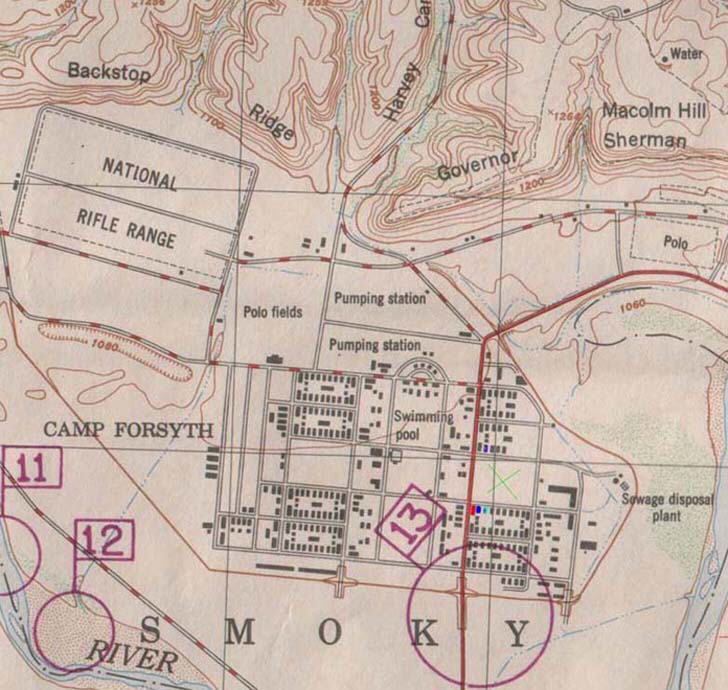




Interesting information from Charlie Williams, Fort Riley Housing Manager.
"Camp Forsyth has had most of the WW II buildings torn down rather than mothballed. This was a requirement from higher HQ because 1) we were receiving money for new construction and 2) the high cost of maintaining mothballed buildings. At first blush, one might not think maintenance costs for these mothballed buildings could be that great. However, these were temporary buildings constructed with the idea they would only last 5 years. Ergo, the plumbing, heating, and electrical systems were not "high end". Also, we found ourselves replacing a lot of wood due to rot or termites. Exterior painting had to be done every 5 years and roofs replaced every 15 to 20 years - usually less because of wind and hail here in Kansas. Bottom line is that a regression analysis indicates that it is better to tear them down rather than maintain them. There are just a handful of the WW II buildings left in Forsyth because they are used as a MOUT Site. I don't remember what the acronym stands for but basically it is urban warfare training location where soldiers can practice entering buildings and clearing them of the enemy.
The Cemetery - it is nearly full and is still run by Fort Riley. Once all the gravesites have been filled, the operation of the cemetery will be turned over to the VA. Earliest gravesites date back to the 1860's. One part of the cemetery was used solely for the victims of the Cholera Epidemic experienced in the early years of Fort Riley. No really famous people are buried there. George Custer and his brother Tom (who was also killed at Little Big Horn) are both buried at Fort Leavenworth. Major Ogden, a former Post Commander and the man that the town of Ogden (outside the Fort Riley gate to the east) was named after, is buried here. There is another section of the cemetery where German, Italian, and Japanese POWs are buried. During WW II, these POWs were brought here to Fort Riley. Those that died in captivity were buried here at Riley. Occasionally, I have seen where a family of one of these POWs will pay to have the remains exhumed and returned to the native country for burial."
Many thanks to Elmer Horne, former 2nd Lt in the 2nd L & L and PsyWar Detachment, who supplied maps of the Fort Riley area and a copy of the above e-mail, and without whose help this page would not be possible. Our thanks also to Charlie Williams, currently the Fort Riley Housing Manager, for the above information.
PLEASE NOTE: Most links will open in a new "window". To return to previous page close the new window. Thank you.
TO RETURN TO PREVIOUS PAGE CLOSE WINDOW.
Second Publishing: 27-Sep-2005 04:18 PM - Last Update: 25-Feb-2006 09:15 PM
© 2005 by Frank R. & Alina B. Haus - All Rights Reserved